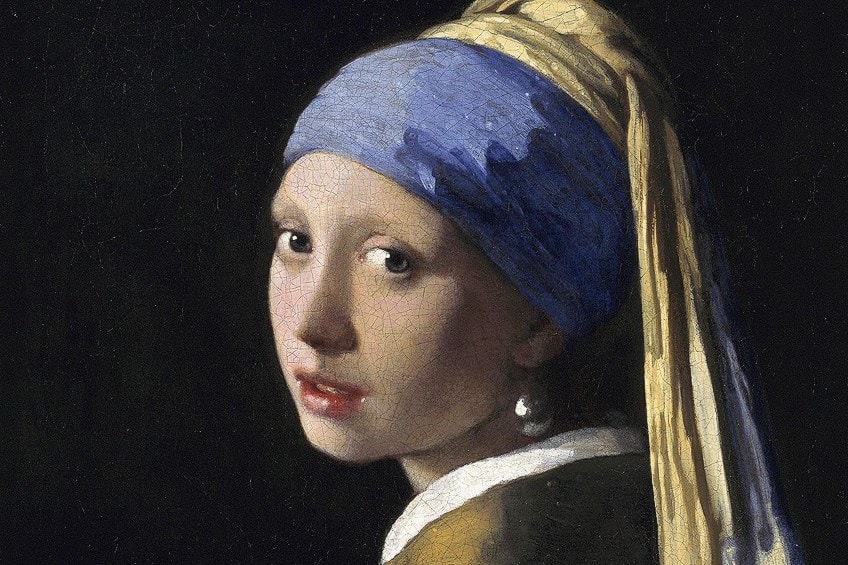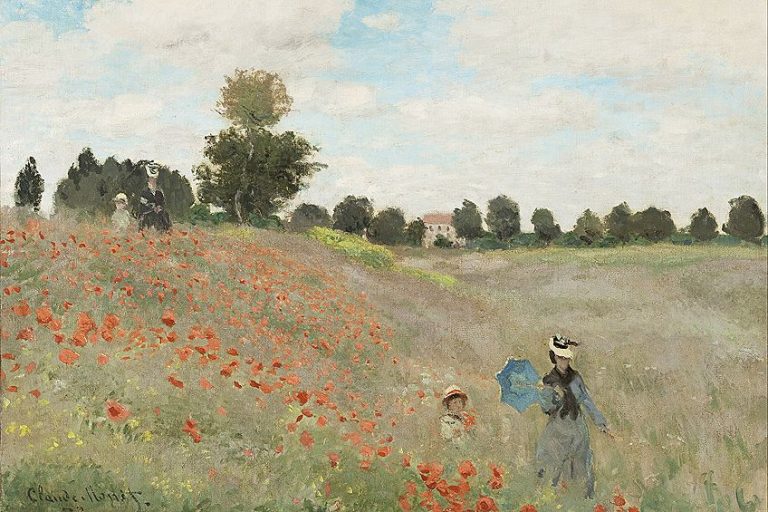Famous Portrait Paintings – Looking at the Most Famous Art Portraits
Portrait painting has remained an incredibly popular genre of painting for many centuries now. Most artists have experimented with some form of portrait painting throughout their careers, with several artists going on to create the most famous portrait paintings ever known. Despite it being so admired, portrait painting exists as one of the most difficult genres to master in the art world. Below, we will be taking a look at 15 of the most famous portrait artists that ever lived, along with their iconic and still-revered artworks.
Table of Contents
- 1 What Are Portrait Paintings?
- 2 Our Top 15 Most Famous Portrait Paintings Ever
- 2.1 Mona Lisa (1503 – 1506) by Leonardo da Vinci
- 2.2 Vertumnus (1591) by Giuseppe Arcimboldo
- 2.3 The Milkmaid (c. 1658) by Johannes Vermeer
- 2.4 Self-Portrait (1660) by Rembrandt van Rijn
- 2.5 Girl with a Pearl Earring (c. 1665) by Johannes Vermeer
- 2.6 Arrangement in Gray and Black No. 1 (1871) by James McNeill Whistler
- 2.7 Portrait of Madame X (1884) by John Singer Sargent
- 2.8 Portrait of a Young Woman (c. 1885) by Edgar Degas
- 2.9 Self-Portrait with a Straw Hat (1887) by Vincent van Gogh
- 2.10 Woman with a Hat (1905) by Henri Matisse
- 2.11 Portrait of Adele Bloch Bauer I (1907) by Gustav Klimt
- 2.12 American Gothic (1930) by Grant Wood
- 2.13 Le Réve (1932) by Pablo Picasso
- 2.14 The Two Fridas (1939) by Frida Kahlo
- 2.15 Marilyn Diptych (1967) by Andy Warhol
- 3 Frequently Asked Questions
What Are Portrait Paintings?
Considered to be the most prevalent genre in painting, portraiture has been attempted by most artists at some point. Described as a painting style intended to represent a particular human subject, the term “portrait painting” developed to accurately classify both the individual depicted and the actual painting. As this age-old style has defined itself through the portrayal of others, a substantial and comprehensive collection of famous art portraits has been put together over the years, with various influential painters adding to the group.
Portraiture is widely believed to be the most challenging form of painting to exist, as it requires an eager sharpness for portraying the human form in the utmost level of detail. Generally, artists creating portrait paintings work to capture a precise representation of their subject while emphasizing their physical, mental, and even spiritual characteristics in an admirable way.
As portraits tend to evoke great emotions from both the artist and viewers, the focus placed on the face, expression, and personality of the individual is very influential.

Many of the best artists in history had a remarkable talent that allowed them to express the gist of human emotion in a lone portrait. Often, these artists studied human anatomy in great detail so that they were able to meticulously understand the subtleties in each small change of expression and went on to portray this in their artworks. Interestingly enough, when reviewing the most famous portrait paintings ever made, the artists tend to be universally known while the actual subject of the work remains less obvious.
In addition to well-known portraits existing, many artists who lived were solely known to paint portraits throughout their careers.
These famous portrait artists tended to create artworks based on commissions for both public and private groups, with the paintings acting as a remembrance of the wealthy and influential. When considering the most famous portrait paintings that have been produced over the years, including both group and self-portraits, it is clear to see the great impact that this specialized form of painting has had on the art world.
Our Top 15 Most Famous Portrait Paintings Ever
Throughout history, famous art portraits and artists have dominated the art world. This is due to the precise level of skill required to produce portraits, as well as the great impact that certain artists had on audiences. When comparing specific portraits, some stand out more than others purely due to the subject matter chosen, the way the work was painted, or even because of the artist themselves.
While the below list is not exhaustive by any means, we have put together our top 15 picks of the most famous portrait paintings of all time.
Mona Lisa (1503 – 1506) by Leonardo da Vinci
| Artist | Leonardo da Vinci |
| Date | 1503 – 1506 |
| Medium | Oil on poplar panel |
| Dimensions | 77 cm x 53 cm |
| Where It Is Currently Housed | Louvre, Paris |
Arguably art history’s most famous portrait ever painted, as well as the most instantly recognized artwork, is the Mona Lisa, which was painted by Leonardo da Vinci at the start of the 16th century. Both the technical aspects of the painting and the actual subject have fascinated viewers for centuries and raised a great deal of interest.
Also known as “Portrait of Lisa Gherardini”, da Vinci made use of extreme detail to accurately capture the curious expression of her face and eyes, which are said to be following you wherever you stand.
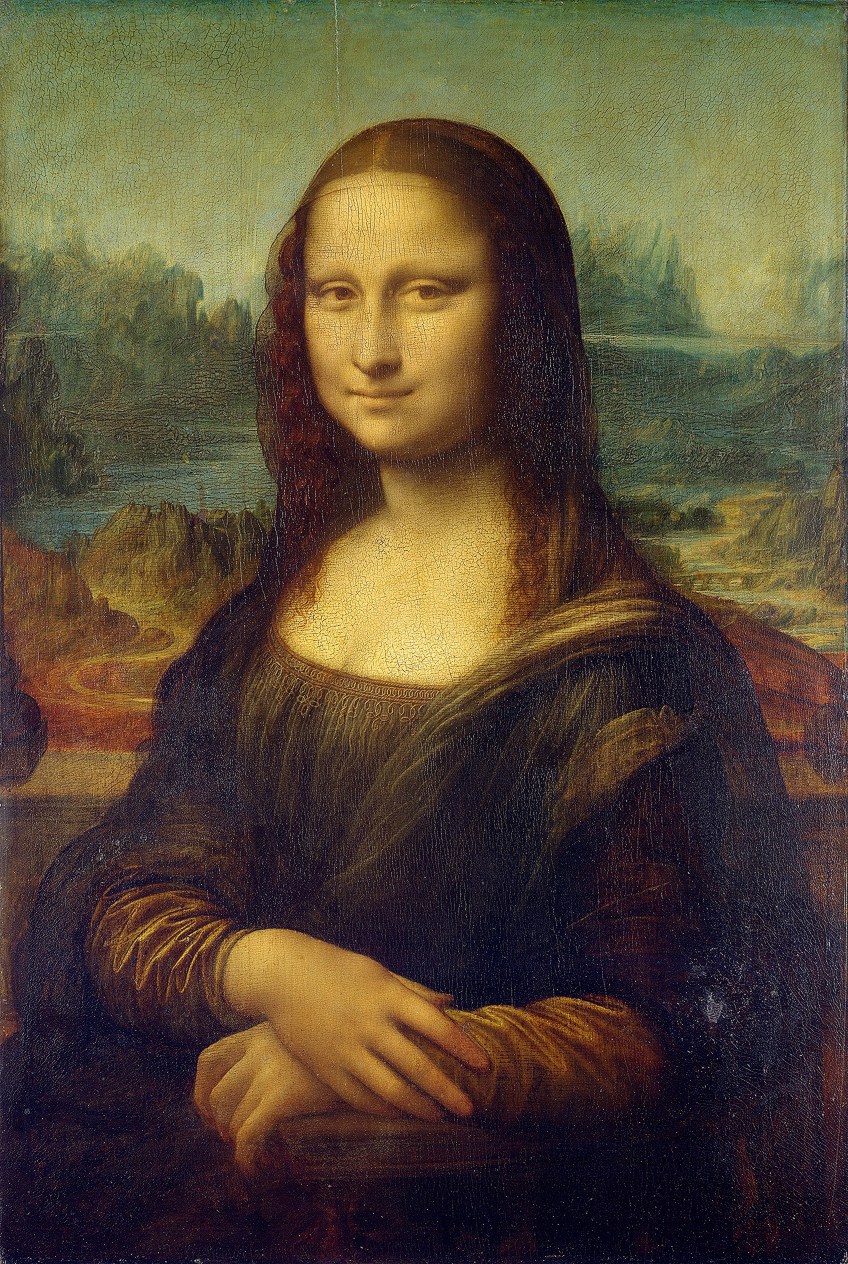
When looking at the composition of the Mona Lisa, a triangle is subtly made through the position of her folded arms that leads up to her head. While this pose was known to be popular at the time, the nuanced way that da Vinci captured it helped to focus all attention onto her interesting face.
Looking confidently at viewers with a soft smile on her face, her wandering eyes and sly smirk have been the central topic of debate since the artwork’s debut. This is because her “puzzling smile” is said to say too much and not enough at the same time.
Despite being labeled as the greatest artwork ever, some art historians have called the Mona Lisa “overrated”. This is mainly because of her small size, with some believing that da Vinci left the artwork incomplete due to her lack of eyebrows. Only gaining worldwide fame in 1911 after it was stolen, the Mona Lisa eventually became the most visited, written about, and parodied work of art in the world. In 2016, it broke the Guinness World Record for being insured at $100 million, and in 2021, the Mona Lisa is worth over $870 million.
Vertumnus (1591) by Giuseppe Arcimboldo
| Artist | Giuseppe Arcimboldo |
| Date | 1591 |
| Medium | Oil on wood |
| Dimensions | 68 cm x 56 cm |
| Where It Is Currently Housed | Skokloster Castle, Sweden |
The painting style of Giuseppe Arcimboldo is impossible not to recognize, given the fact that the Renaissance artist was famous for creating his portraits solely out of fruits, vegetables, and plants. Known for his whimsical portraits, Arcimboldo was able to somewhat accurately portray his subjects through using a variety of objects. Vertumnus was made to depict the Holy Roman Emperor Rudolf II, who was the Roman god of metamorphoses in nature and life.
Each object used within the painting was directly related to the Emperor in some way.

Despite Arcimboldo’s playful approach to portraiture, Vertumnus is incredibly precise in its creation, as each detail of the Emperor’s expressive face is represented by a different piece of food or plant. While the famous portrait may seem silly at first glance, you can see the extensive effort that Arcimboldo put into his work, as even the individual teeth are visible.
When viewing his iconic painting, the extensive imagination and attention to detail that Arcimboldo had to exert to create a flawless portrait becomes obvious to audiences.
Although Vertumnus is a far cry from realistic, the pure talent of Arcimboldo must be praised. While he may have chosen green beans, red fruits, and apples to represent prominent features, Arcimboldo still followed most of the principles for typical portraiture at the time. While the muted black background was in keeping with the standards for portraits, he also carefully chose which objects to use.
By depicting flowers and fruits from all seasons, Arcimboldo subtly symbolized the abundance and harmony of Emperor Rudolf’s reign. As he was not a popular ruler, we can only assume that Arcimboldo chose to paint an oddly flattering painting of him. A possible reason for this was thought to be because Emperor Rudolf was a great supporter of Arcimboldo’s art.
The Milkmaid (c. 1658) by Johannes Vermeer
| Artist | Johannes Vermeer |
| Date | ca. 1658 |
| Medium | Oil on canvas |
| Dimensions | 45.5 cm x 41 cm |
| Where It Is Currently Housed | Rijksmuseum, Amsterdam |
Sometimes called “The Kitchen Maid”, The Milkmaid was painted by Dutch artist Johannes Vermeer, who was one of the great masters of the Dutch Golden Age. Depicting an ordinary and domestic scene of a kitchen maid pouring milk from a jug, The Milkmaid differed greatly from Vermeer’s other works. This was because it was the first time that he chose to use a simple and sturdy older woman as his subject as opposed to the affluent and elegant young ladies he normally painted.
Located at the Rijksmuseum, this painting is undoubtedly regarded as one of its finest and most popular attractions.

The Milkmaid is considered to be one of Vermeer’s most notable works, as his ability to capture a mundane scene from everyday life in such honesty was very admired. What makes The Milkmaid such an interesting portrait to look at is the complete stillness that Vermeer managed to achieve. Apart from the pouring of the milk, which captures the lady’s entire attention, nothing else moves in the composition.
Vermeer was highly praised for his ability to take such an unremarkable activity and make it the entire subject of an incredibly impressive painting.
Standing like a statue in a brightly lit room, the milkmaid commands our attention towards her simple task. As Vermeer painted her figure with a slightly lowered perspective, he provided viewers with a very monumental character to look at and consider. Through his handling of perspective and light, Vermeer created a realistic-looking kitchen that appeared bare except for the activity of the milkmaid.
Self-Portrait (1660) by Rembrandt van Rijn
| Artist | Rembrandt |
| Date | 1660 |
| Medium | Oil on canvas |
| Dimensions | 80.3 cm x 67.3 cm |
| Where It Is Currently Housed | Metropolitan Museum of Art, New York City |
Another one of the famous portrait paintings on our list that was created by a notable artist is Self-Portrait, which was painted by the iconic Rembrandt van Rijn. Known as a painter of light, Rembrandt explained that his color palette was only made up of dark colors because he believed that light should be the main subject in a painting. During his career, Rembrandt painted over 40 different self-portraits and created Self-Portrait when he was 54 years old. This painting was specifically noted for his wrinkled brow and worried expression.
When looking at this painting, the focal point of the work lies in the incredibly troubled look on Rembrandt’s face, which was said to express the distressed condition of his mind.

In this portrait, Rembrandt was unsparing in his depiction of himself, as he clearly acknowledged the signs of his aging through the way he painted his furrowed face. In addition to the crease lines on his forehead, Rembrandt included heavy pouches under his eyes which suggested extreme fatigue, as well as a double chin.
At the time that Self-Portrait was painted, portraiture had not yet developed the undertone of holding a great personal discovery. This only came later during the Romanticism era, which meant that Rembrandt’s Self-Portrait merely existed as a way to document who he was during the 17th century. When Rembrandt created Self-Portrait, he had lost his wife, one of his children, and had narrowly avoided bankruptcy by selling most of his paintings.
All of this can account for the utter exhaustion and hopelessness seen on his face.
Girl with a Pearl Earring (c. 1665) by Johannes Vermeer
| Artist | Johannes Vermeer |
| Date | c. 1665 |
| Medium | Oil on canvas |
| Dimensions | 44.5 cm x 39 cm |
| Where It Is Currently Housed | Mauritshuis, The Hague |
The most important artwork ever created by Johannes Vermeer, and possibly one of his most famous portrait paintings, is Girl with a Pearl Earring. Originally named “Girl with a Turban”, Girl with a Pearl Earring is widely considered to be a significant work of Western art and is often dubbed as the “Mona Lisa of the North”. Much speculation has arisen surrounding the identity of the young woman in the portrait, with the most common theory suggesting that it was a painting of Maria Vermeer, who was the painter’s oldest daughter.
A controversial fact of Girl with a Pearl Earring is that while it is widely considered to be one of the most significant portraits ever made, it is not a real portrait in the technical sense. Instead, it has been labeled as a “tronie”, which was a popular type of painting during the Dutch Golden Age. A tronie was typically a study of an unidentified person who became the subject of the artwork.
These individuals also wore luxurious items of clothing and were set against a simple and clear background, which further highlighted their anonymous character.
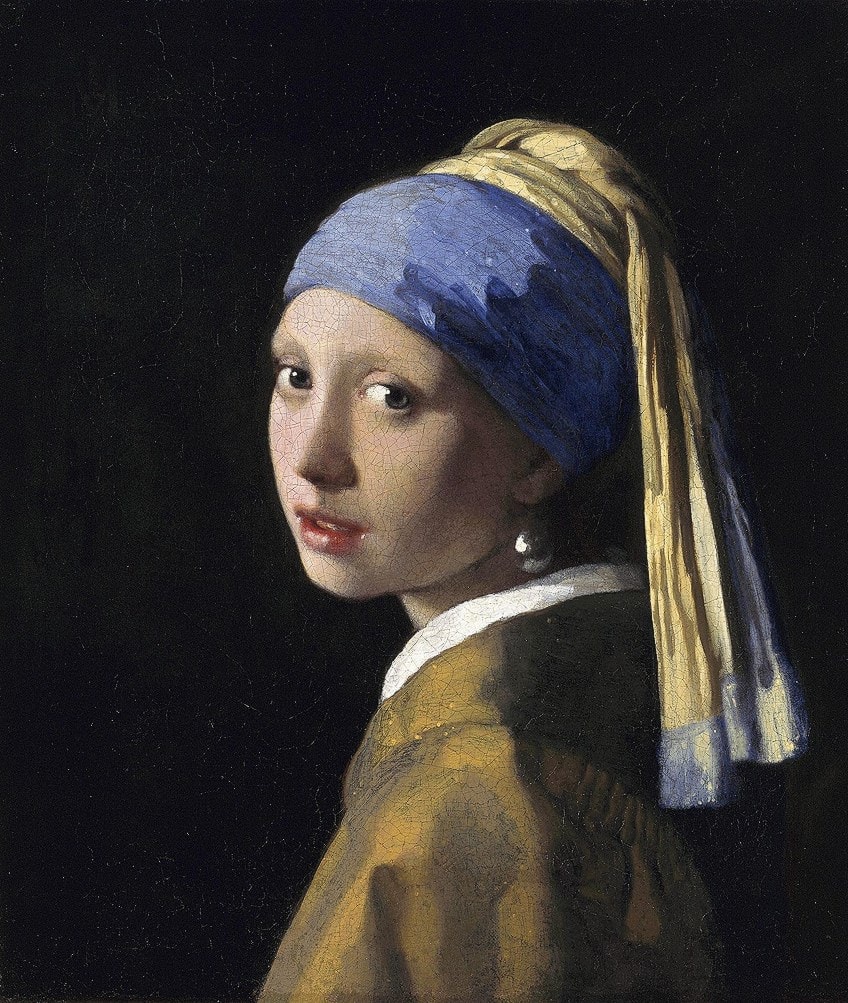
The girl, who gazes steadily at the viewer, has been portrayed with a captivating expression that elicited curiosity from audiences when looking at the work. Vermeer was praised for his incredible level of realism, as well as his ability to capture the understated changes between light and dark. Wearing an electric blue turban that contrasts beautifully against her yellow dress and the piece of fabric behind her shoulder, a dramatic image is created. This helped to pull focus to the main element of the work, which is her glittering pearl earring that is seen.
Arrangement in Gray and Black No. 1 (1871) by James McNeill Whistler
| Artist | James McNeill Whistler |
| Date | 1871 |
| Medium | Oil on canvas |
| Dimensions | 144.3 cm x 162.4 cm |
| Where It Is Currently Housed | Musée d’Orsay, Paris |
American artist James McNeill Whistler also produced one of the most famous portraits in history with his creation of Arrangement in Gra18y and Black No. 1. More commonly known as Whistler’s Mother, Whistler created this well-known portrait of his mother, Anna McNeill Whistler, after his model could not make the appointment and he asked his mother to stand in for his subject. Originally picturing his model standing up for this portrait, Whistler’s mother was too uncomfortable to stand for long periods of time, so he changed his initial idea.
While this portrait exists as a famous American artwork, Whistler did not intend to create a portrait.
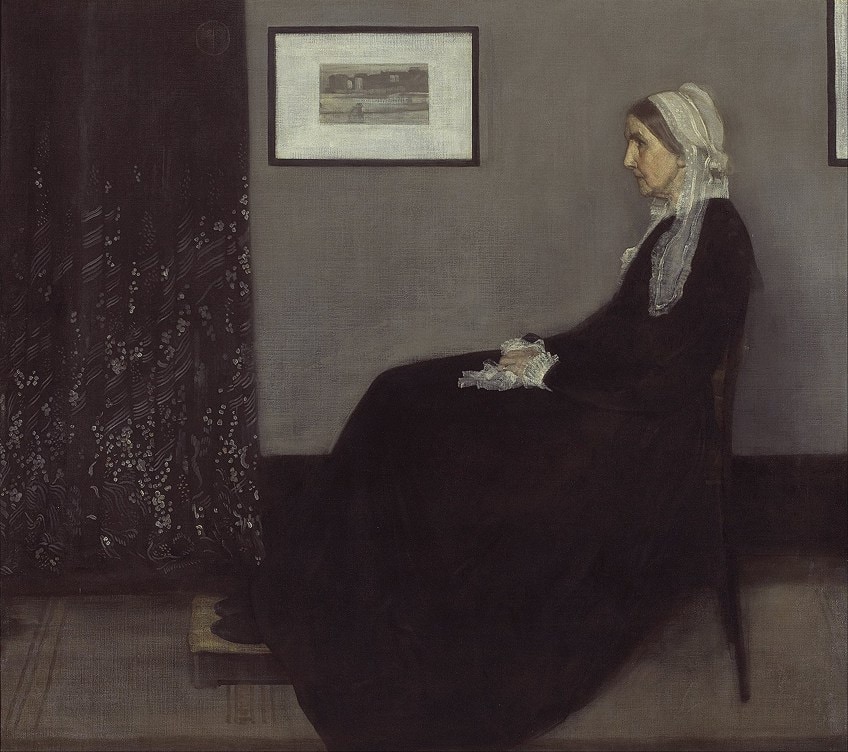
At the time, he found many similarities between music and painting, which led to him calling many of his artworks by the name of “harmony” and other musical words. As he titled this work Arrangement in Gray and Black No. 1, Whistler’s whole aim was to prioritize the tonal value in his work above all other interpretations.
However, his mother quickly became the focal point of the work, which led to the painting being seen as a portrait.
Whistler managed to capture his mother, who was 67 years old at the time, in a state of mourning. She was depicted wearing only black clothing with a very dismal expression on her elderly face, which earned Whistler much praise for his ability to portray such deep emotions using only the side profile of his subject. In addition to his mother being seated in front of a grey wall, various shades of dark and light tones can be seen in the painting. This added to the heightened level of realism, which was rarely seen in such bleak and sad works.
Portrait of Madame X (1884) by John Singer Sargent
| Artist | John Singer Sargent |
| Date | 1884 |
| Medium | Oil on canvas |
| Dimensions | 234.9 cm x 109.8 cm |
| Where It Is Currently Housed | Metropolitan Museum of Art, New York City |
Another American artist who made our list of famous portrait artists is John Singer Sargent, who created Portrait of Madame X. Sargent’s portrait stole the hearts of art lovers throughout the world when his work was first unveiled, with viewers focusing on the delicate beauty that he managed to portray. However, many critics and officials felt differently about this artwork and stated that it was far too provocative to be as revered as it was in France at the time.
The subject of the painting was Virginie Amélie Avegno Gautreau, a young socialite who was the wife of successful French banker Pierre Gautreau.

Portrait of Madame X was not one of Sargent’s commissioned artwork, as he specifically requested to paint his fellow expatriate while they were both in Paris. Sargent painted his subject wearing a black satin dress with jeweled straps, which simultaneously revealed and hid aspects of her body. The pale tone of her flesh created a beautiful contrast against the dark color of her dress and background.
When Sargent presented his work at the Paris Salon in 1884, he was met with a massive uproar from the conservative members of French society. This reaction forced him to eventually leave the country and move to London. While Sargent attempted to hide Madame Gautreau’s name through the anonymous title of the work, his attempt proved useless.
Newspapers published countless cartoons and satirical poetry that mocked both her and Sargent, with these critics failing to see the incredible level of realism in his painting.
Portrait of a Young Woman (c. 1885) by Edgar Degas
| Artist | Edgar Degas |
| Date | c. 1885 |
| Medium | Oil on canvas |
| Dimensions | 27.3 cm x 22.2 cm |
| Where It Is Currently Housed | Metropolitan Museum of Art, New York City |
Iconic artist Edgar Degas experimented a bit with portraiture during his career and created Portrait of a Young Woman as a result. As a well-known Impressionist painter, Degas was best known for his depiction of ballerinas and the influence that photography had on his paintings.
In his portrait, which seems to have been quickly completed, Degas portrayed a young woman with an unclear expression on her face, which was further emphasized by the fact that her gaze does not meet the eyes of viewers.
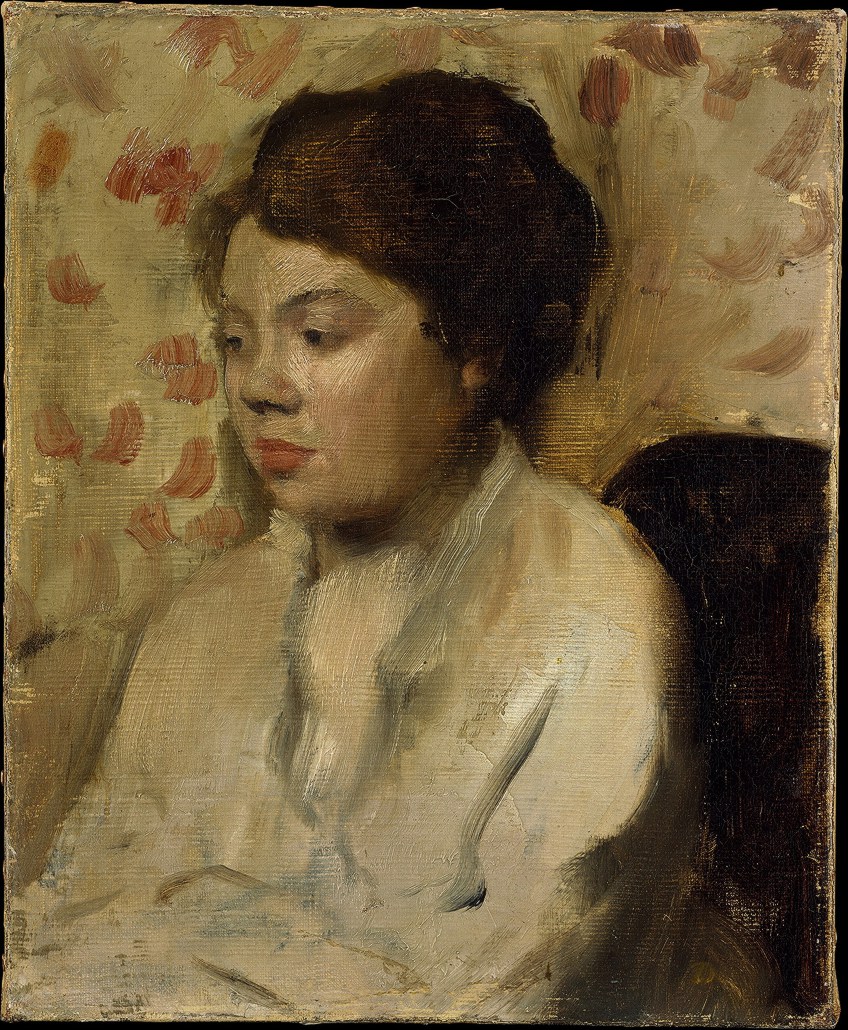
As rough brush marks can be seen in both the background of the work as well as the clothing of the woman, the painting has a very rushed feel to it. Degas, who was well adapted to recognizing the subtleties of gesture and expression, placed all his focus on capturing the woman’s expression and pensive gaze. The use of gestural brushstrokes adds some movement to the otherwise still painting and demonstrates how the background and clothing are of secondary importance when compared to the curious look on the woman’s face.
Self-Portrait with a Straw Hat (1887) by Vincent van Gogh
| Artist | Vincent van Gogh |
| Date | 1887 |
| Medium | Oil on canvas |
| Dimensions | 40.6 cm x 31.8 cm |
| Where It Is Currently Housed | Metropolitan Museum of Art, New York City |
An artist who did not shy away from experimenting with portraiture was the world-renowned Vincent van Gogh, who was known to have painted over 35 portraits of himself. Despite engaging with the style of painting so much, only one portrait was ever painted of him by another artist. One of his famous portraits is Self-Portrait with a Straw Hat, which he painted five different versions of during 1887.
Van Gogh enjoyed being his own model to practice his portrait techniques and bought a good enough mirror specifically for that purpose.
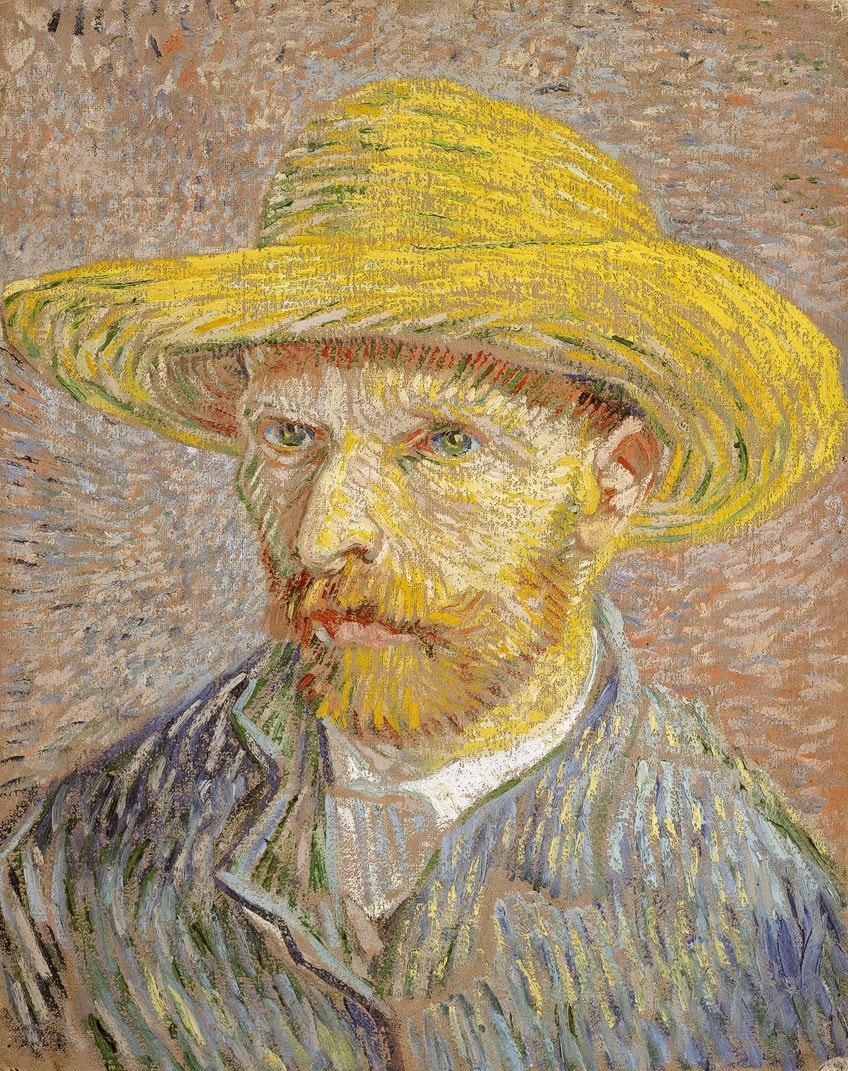
Van Gogh displayed a great interest in the human face, which could be seen in the multiple self-portraits he produced. He began his Self-Portrait with a Straw Hat series between 1886 and 1888 while he was living with his brother in Paris in an attempt to accurately depict the emotions he was feeling at the time.
In this particular painting, van Gogh revealed his crumbling mental and physical health through the tight mouth he painted and the deep colors and shadows that he chose, with the wild background further emphasizing his decline.
In his portrait, van Gogh portrayed himself dressed in a yellow straw hat and a blue work coat usually worn by peasant laborers. This was all purposefully chosen, which led van Gogh to wear this specific outfit multiple times as he continued to paint different versions of Self-Portrait with a Straw Hat. The clothing was said to fit in with van Gogh’s self-image as a working man’s artist, with the clothes expressing the image he attempted to portray.
Woman with a Hat (1905) by Henri Matisse
| Artist | Henri Matisse |
| Date | 1905 |
| Medium | Oil on canvas |
| Dimensions | 80.6 cm x 59.6 cm |
| Where It Is Currently Housed | San Francisco Museum of Modern Art, San Francisco |
At the start of the 20th century, Henri Matisse became another artist to add to our list of famous portrait artists when he created Woman with a Hat. He created this multicolored portrait of his wife, Amélie, which stood out at the Paris Salon that year for its brilliance in colors. Matisse took a very different approach to portrait painting because instead of attempting to make his depiction as realistic as possible, he injected as much color as he possibly could to adequately express the emotions he felt in his works.
The playful tone employed by Matisse looking at “Woman with a Hat” was done to demonstrate to viewers just how much he loved his wife, in addition to merrily pointing out her actual occupation as a hat shop owner.
Matisse and his wife were married for more than 40 years, eventually separating because he famously told her that he would “always love painting more”. Woman with a Hat then exists as a commemoration of their long marriage.
The bold and unprecedented combination of colors in Woman with a Hat angered the public greatly when it was exhibited at the 1905 Salon, with the public reporting mostly negative reviews about the work. This was partly because the style of Fauvism, which Matisse had just introduced through his earlier works, differed greatly from the style that the public was already used to.
This painting further cemented the style of Fauvism, as it demonstrated the rapid change that was happening in art which infuriated audiences significantly.
Portrait of Adele Bloch Bauer I (1907) by Gustav Klimt
| Artist | Gustav Klimt |
| Date | 1907 |
| Medium | Oil, silver, and gold on canvas |
| Dimensions | 138 cm x 138 cm |
| Where It Is Currently Housed | Neue Galerie, New York City |
One of the most recognized and famous portrait paintings is Portrait of Adele Bloch Bauer I, which was painted by Austrian artist Gustav Klimt in 1907. Also called “The Lady in Gold” and “The Woman in Gold”, Klimt’s portrait was of Adele Bloch-Bauer, who was a wealthy Jewish woman from Vienna. The portrait was commissioned to Klimt by her husband, Jewish banker and sugar producer Ferdinand Bloch-Bauer. At this time, Klimt had cemented his identity as the painter of attractive women within the Jewish Viennese society.
This portrait exists as Klimt’s most representative work that he created during his golden phase.
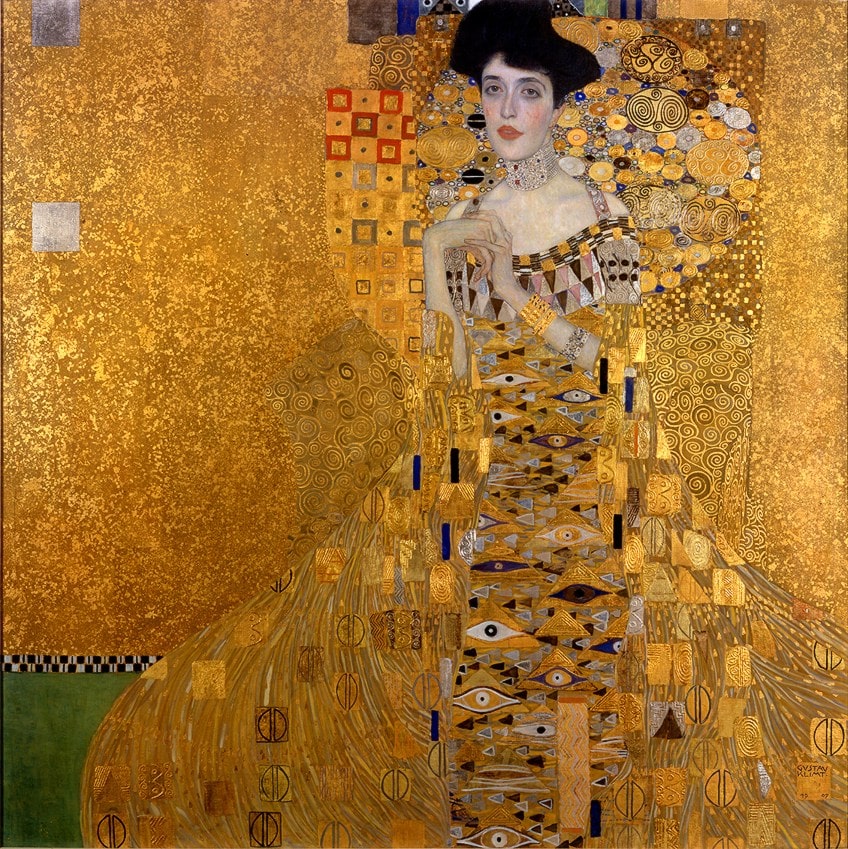
With the use of silver and gold in addition to paint on the canvas, Klimt was able to create a truly ethereal depiction of Adele Bloch Bauer which was further highlighted by the strong focus he placed on femininity in this work. The gold that surrounded Mrs. Bloch Bauer illuminated her figure and her well-defined facial features.
As a greatly admired supporter of the arts, this illumination further implied how loved she was in the art world.
Portrait of Adele Bloch Bauer I was supposedly painted as an anniversary present for Ferdinand’s in-laws, with the painting staying in the family and being loaned to museums and galleries for exhibition. However, when Mrs. Bloch Bauer died in 1925, she requested that the work be donated to the Austrian State Gallery in Vienna. Her family disagreed, with the painting eventually being captured by the Nazis in 1941. After the war, the painting was only returned to the Bloch-Bauer family in 2006, who then sold it for $135 million months later.
American Gothic (1930) by Grant Wood
| Artist | Grant Wood |
| Date | 1930 |
| Medium | Oil on beaverboard |
| Dimensions | 78 cm x 65.3 cm |
| Where It Is Currently Housed | Art Institute of Chicago, Chicago |
Another American painting that is on the list of most famous art portraits is American Gothic, which was painted by Grant Wood in 1930. Wood created this portrait after he saw the Dibble House in Eldon, Iowa, and was inspired by the 19th-century architecture of the farmhouse. To create the Neo-Gothic scene that he wanted; Wood included portraits of the type of people that he thought should live in that house.
He first sketched the house on the back of an envelope and after getting permission from its owners, began painting.
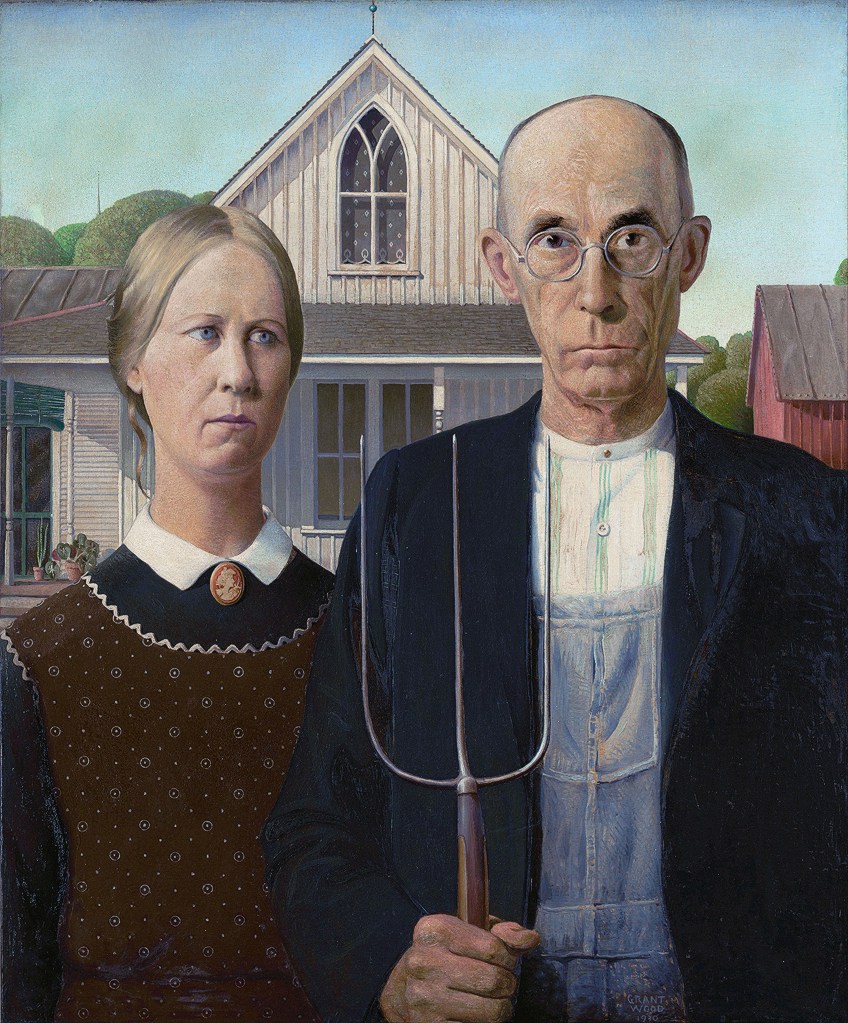
While many people thought that the melancholy couple was based on an actual farmer couple, Wood chose to paint his younger sister, Nan Wood Graham, and dentist, Dr. Bryon McKeeby. He intended to depict the individuals as father and daughter, but he was open to viewers’ interpretations as it became clear that others viewed them as a married couple.
He stated that their relationship was of little significance, as the most important element of the work was whether or not their faces were true to and revealed aspects of American life.
The two grave figures, who stand in front of their modest farmhouse, were a clear testament to the difficulties that American citizens were faced with during the Great Depression of the 1920s. Wood’s painting echoed the hardworking American spirit that citizens took great pride in and has become a classic and much-parodied work of American culture. Wood presented American Gothic at the annual exhibition at the Art Institute of Chicago in 1930 where it won a bronze medal. The museum obtained the painting, where it still resides today.
Le Réve (1932) by Pablo Picasso
| Artist | Pablo Picasso |
| Date | 1932 |
| Medium | Oil on canvas |
| Dimensions | 130 cm x 97 cm |
| Where It Is Currently Housed | Private collection |
Pablo Picasso is arguably one of the greatest painters of all time, with Le Réve being seen as his most famous portrait ever. The subject of this portrait was Marie-Thérèse Walter, who was the 22-year-old mistress of Picasso at the time. Unlike Picasso’s other mistress, Dora Maar, who he regularly portrayed as anguished or menacing, he chose to depict Marie-Thérèse as a cheerful and bright figure with lovely blond hair who appeared to be very welcoming and warm.
The use of oversimplified lines and contrasting colors added to the emphasis of Picasso’s portrait, as it resembled the early Cubist and Fauvist style of the 1910s.
Le Réve belonged to Picasso’s period of distorted depictions, as his contorted portrayal of Marie-Thérèse made it extremely difficult for viewers to automatically identify the figure. Picasso created many works with obvious elements of eroticism, with Le Réve angering critics and viewers when it was first exhibited with the incredibly sensual and lewd sections that could be seen.
This was because Picasso painted what looked to be an erect penis, supposedly symbolizing his own, on the one side of his mistress’s tilted face. The color used in that section of the artwork also added to the idea that a penis was indeed depicted, as Picasso chose a very neutral and flesh-colored tone for that specific half of her face.
In 2013, “Le Réve” made history as the 5th most exorbitant painting ever sold at the time at $155 million. In 2017, this price remained the second-highest price that has ever been paid to obtain a Picasso painting.
The Two Fridas (1939) by Frida Kahlo
| Artist | Frida Kahlo |
| Date | 1939 |
| Medium | Oil on canvas |
| Dimensions | 173.5 cm x 173 cm |
| Where It Is Currently Housed | Museo de Arte Moderno, Mexico City |
The female artist who was classified as one of the most famous portrait artists to ever live was Frida Kahlo, who painted many iconic self-portraits throughout her career. The Two Fridas exists as a very strange yet thought-provoking depiction of the dual nature of the artist’s life at the time, as Kahlo painted this portrait at the time of her divorce from fellow artist Diego Rivera. They were known to have a very explosive and unpredictable relationship, often marrying, divorcing, and then re-marrying.
In The Two Fridas, two versions of Kahlo are painted. Both depictions of Kahlo are seated in a graceful but puzzling way, as they steadily stare out at viewers. The version on the left wears an elegant dress of European design that was popular among wealthier Mexicans, as it symbolized affluence. The version on the right is seen wearing a more traditional Mexican dress made up of many colors.
These two women clearly demonstrated the heavy influence that Europe was exerting on the very essence of Mexican heritage at the time.
Possibly the biggest focal point in The Two Fridas are the two lifelike and gruesome hearts that Kahlo painted. As the more European version of herself is shown with a ruptured heart, viewers can clearly see where Kahlo’s own heart truly lay, as the traditional Frida on the right has a heart that is alive and healthy.
This painting, as well as the majority of Kahlo’s other self-portraits, exists as a deep symbolic portrayal of the physical and psychological traumas she was facing at that moment, with this portrait representing the profound loss she felt.
Marilyn Diptych (1967) by Andy Warhol
| Artist | Andy Warhol |
| Date | 1962 |
| Medium | Silkscreen ink and acrylic paint on canvas |
| Dimensions | 205.4 cm x 289.5 cm |
| Where It Is Currently Housed | Tate, London |
The last artist and artwork on our list of famous portrait paintings is Andy Warhol’s Marilyn Diptych, which he created in 1962. This monumental Pop art silkscreen painting depicted the iconic American actress Marilyn Monroe and was noted for being the most well-known work of Warhol’s that featured the actress. Warhol considered Monroe to be an endless source of inspiration and set out to multiply her portrait in a series of colorful prints. This portrait was made soon after the actress died of a drug overdose in 1962.
The diptych contains one photo of Monroe that has been multiplied several times in both color and black and white.
Warhol used a publicity photo from her 1953 movie titled Niagara as his source material. The original photo was taken in monochrome and featured Monroe with her iconic smile frozen into place. In the colored portraits that Warhol created, he used vibrant colors for her face to intensify her makeup to a great degree.
Due to the excessive color that Warhol used, Marilyn Diptych can look like a real depiction of Monroe at certain times. At other times, this diptych can take on other representations completely, as the incredibly vibrant colors of Monroe’s multiple faces is extremely harsh on viewers’ eyes. The use of contrasting canvases hinted at Monroe’s clashing public and private self and was Warhol’s odd way of praising her brilliant presence in Hollywood during the 1950s and 1960s, as she was one of the most famous women alive at that point.
In the developing art world, portrait painting exists as one of the few ancient genres of art that are still utilized today. While we have only covered 15 of the most famous art portraits ever made, many other vital and equally famous portrait paintings can be added to our list. Notable artists who specialized in portraiture often created more than one well-known portrait, which means that there are many other artworks out there to still explore. If you have enjoyed this article, we thoroughly encourage you to find out about these other works.
Take a look at our famous portraits webstory here!
Frequently Asked Questions
Must a Portrait Only Include One Person?
Several famous portrait artists have created iconic portraits that were made up of more than one person. These are generally called “group portraits”, where each individual strikes a pose and gives their best expression. Group portraits were, and still are, incredibly popular for family portraits, with the most well-known examples being commissioned for royal families. Today, family portraits can still be captured through painting, but the modern invention of photography has allowed individuals to create their own portraits without needing an artist.
What Is the Most Famous Portrait to Exist?
If we had to further narrow down the list of famous portraits to just a single painting, the most iconic portrait would definitely be Leonardo da Vinci’s Mona Lisa. As the world’s most expensive painting, Mona Lisa is widely considered to be the best artwork ever produced, irrespective of its genre. Located at the Louvre Museum in Paris, Mona Lisa attracts more than 10 million visitors per year. The artwork has accommodated between 30 000 and 50 000 people a day, with 80% of the museum’s visitors coming solely to view da Vinci’s painting.
Isabella studied at the University of Cape Town in South Africa and graduated with a Bachelor of Arts majoring in English Literature & Language and Psychology. Throughout her undergraduate years, she took Art History as an additional subject and absolutely loved it. Building on from her art history knowledge that began in high school, art has always been a particular area of fascination for her. From learning about artworks previously unknown to her, or sharpening her existing understanding of specific works, the ability to continue learning within this interesting sphere excites her greatly.
Her focal points of interest in art history encompass profiling specific artists and art movements, as it is these areas where she is able to really dig deep into the rich narrative of the art world. Additionally, she particularly enjoys exploring the different artistic styles of the 20th century, as well as the important impact that female artists have had on the development of art history.
Learn more about Isabella Meyer and the Art in Context Team.
Cite this Article
Isabella, Meyer, “Famous Portrait Paintings – Looking at the Most Famous Art Portraits.” Art in Context. October 25, 2021. URL: https://artincontext.org/famous-portrait-paintings/
Meyer, I. (2021, 25 October). Famous Portrait Paintings – Looking at the Most Famous Art Portraits. Art in Context. https://artincontext.org/famous-portrait-paintings/
Meyer, Isabella. “Famous Portrait Paintings – Looking at the Most Famous Art Portraits.” Art in Context, October 25, 2021. https://artincontext.org/famous-portrait-paintings/.


